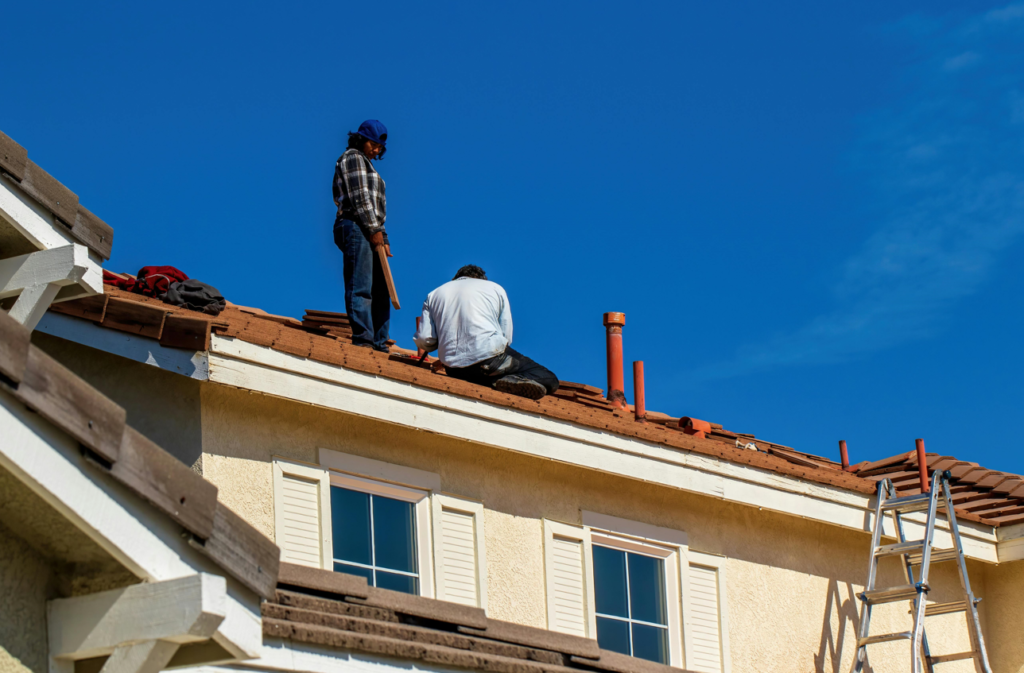Ensuring the longevity and durability of your home’s roofing is paramount. Weatherproofing this part of your home will protect your entire property from the harsh elements, potentially saving substantial amounts of money on repairs. In this guide, we’ll discuss effective strategies for weatherproofing your home’s roof, with simple yet powerful methods!
Inspect Regularly
Frequent inspections are the first line of defense against weather-related damage. Periodic checks, especially after severe weather events, can reveal minor issues before they escalate into significant problems. Identifying missing shingles, cracks, or leaks early on allows for prompt repairs, maintaining the integrity of your roofing system.
Clean Gutters and Downspouts
Debris in gutters and downspouts can lead to water buildup, causing damage to your roof and the underlying structures. Ensuring these are clear and water can flow freely prevents water from pooling, protecting your roofing material from unnecessary moisture exposure.
Apply Roof Sealant
A quality roof sealant offers an additional layer of protection against water penetration. Applying sealant around vents, chimneys, and roof edges can prevent leaks, particularly in areas prone to heavy rains. This step is integral in extending the lifespan of your roofing materials.
Install Proper Insulation and Ventilation
Insulation and ventilation in the attic aid in regulating temperature and moisture levels under the roof. Proper ventilation prevents the build-up of heat and condensation, both of which can weaken roofing materials over time. Insulation helps in maintaining consistent temperatures, reducing the risk of ice dams forming in colder climates.
Trim Overhanging Branches
Trees near your home can pose a risk during storms, as overhanging branches may break and damage the roof. Regularly trimming these branches minimizes the threat, reducing the likelihood of physical damage to your roofing system.
Consider Roof Overlays
For enhanced protection, homeowners may consider installing roof overlays, which involve adding a new layer of roofing material over the existing one. This method can increase a roof’s resistance to wind and water. However, consulting with professional roofing services like Sweers Eavestrough and Roofing Co, Inc is advisable to see if this option is feasible for your home.
Reinforce the Roof
In areas susceptible to high winds or hurricanes, reinforcing the roof can provide additional stability. Techniques include installing hurricane straps or clips that secure the roof to the walls more firmly, offering a higher resistance to strong winds.
Address Flashing
Flashing, the material that seals transitions on the roof, is a common site for leaks. Ensuring that flashing is correctly installed and in good condition is vital. It should be checked regularly and replaced or repaired if signs of damage or wear are observed.
Choose Durable Roofing Materials
When replacing or installing a new roof, opting for durable materials that are known for their weather-resistant properties is wise. Materials such as metal, slate, and certain types of asphalt shingles offer superior protection against various weather conditions, from heavy rainfall to extreme heat.
Conclusion
Protecting your home from the elements starts with the roof. By implementing these weatherproofing tricks, homeowners and property managers can enhance the durability and resilience of their roofing systems. Remember, consistent maintenance and timely repairs are key!
